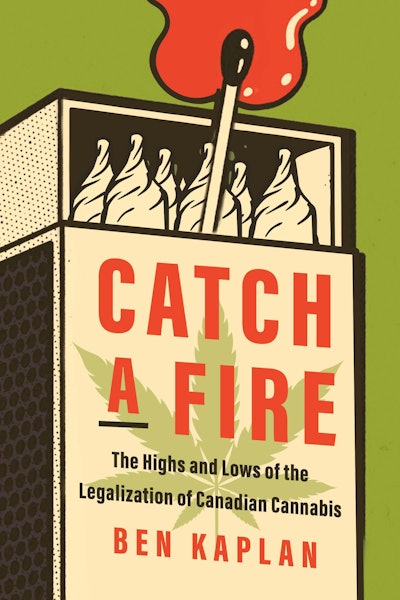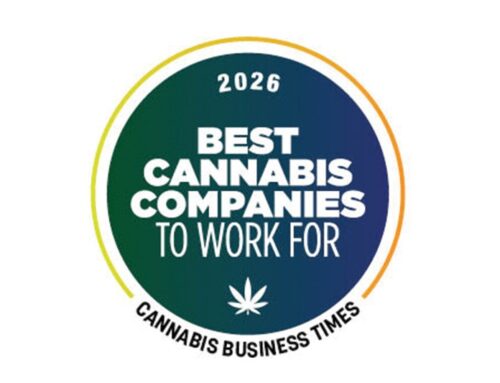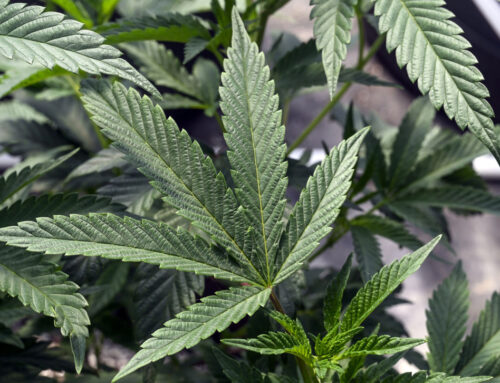What Canada’s Legal Cannabis Market Can Teach U.S. Producers and Policy Makers
June 10, 2025
Close to seven years after cannabis was legalized for recreational use in Canada, many lessons of what went right and wrong north of the border offers a range of lessons for American cannabis producers and policy makers.
For one, the fact that the federal government passed the Cannabis Act nationally in 2018 was a vital step forward, said Ben Kaplan, a Toronto-based author of the recently published book “Catch a Fire: The Blaze and Bust of the Canadian Cannabis Industry.” And a valuable lesson for prohibitionists.
“Cannabis got legalized and the sky didn’t fall,” Kaplan said in an interview with Cannabis Business Times, “and we created an industry that shared what they knew from the CPG space, which gave companies the ability to produce, ship, seal and deliver the products like any other widget.” 
Trina Fraser, a lawyer with Ottawa-based Brazeau Seller Law who specializes in the cannabis sector, echoed Kaplan, adding, “It was a Justin Trudeau campaign promise he kept once elected, and the doom-and-gloom opponents for cannabis legalization were proven wrong.”
Kaplan noted how 2018’s legislation also spurred job growth and an economic boom the country. Figures from Statistics Canada point to how the cannabis sector contributed $7.7 billion (all figures Canadian) to Canada’s GDP in 2023, surpassing that of breweries, wineries, and distilleries combined, as StratCann reported.
Legalization also created 98,000 jobs annually, on average between 2018 and 2021, according to a Deloitte report. In the U.S., the still-young cannabis industry already employs more than 440,000 (full time), according to the “2024 Vangst Jobs Report.” And, a “2022 Leafly Jobs Report” cited by NORML suggested that as the cannabis market matures, employment numbers could skyrocket to 1.5 million to 1.75 million.
Sam Gibbons, senior vice president of corporate affairs for cannabis and produce business Village Farms, lauded Canada’s consumption rates, attributing that in part to the availability of quality products consumers return to again and again. “Seventy-five percent of the total market in Canada has migrated to the legal market (approximately 25% remains through illicit market), which is a great reflection of a successful market if one of the intentions of legalization is to eliminate illicit activity,” he said.
Village Farms operates in Canada mainly under the Pure Sunfarms brand, according to Gibbons, and sells hemp-derived CBD products in most U.S. states under the Balanced Health Botanicals label.
Both through educating the public and Canadians normalizing what was once an illegal drug, communities didn’t later contest the many cannabis stores dotting neighborhoods, even though some eyebrows were raised at first, Fraser said. She added, “But safety issues never really came up with these stores, and now no one bats an eyelash anymore at all these stores popping up.”
Success Pockmarked by High Taxes, Over-Valuations
But the government, Health Canada—which is the primary government body that oversees regulated cannabis—and licensed producers made many missteps since 2018. For one, the taxing regime is more onerous in Canada compared to some states in the U.S., especially when examining the excise tax issue.
On the list of “here’s what not to do, America,” Fraser pointed to the financially painful excise tax that was created by the federal government to cover expected costs related to policing, health care and policing.
But the legal industry “actually lowered costs in so many of those areas, and this tax has killed many smaller businesses, and only left the major players like Tilray and Organigram standing, and it was created to help with policing and criminality,” she said.
How does this tax work?
- Dried and Fresh Cannabis: The federal duty is the greater of (in Canadian dollars):
- $0.25 per gram of flowering material, OR
- 2.5% of the producer’s selling price (dutiable amount).
- Cannabis Oils, Edibles, Extracts, and Topicals: Subject to a flat-rate duty of $0.0025 per milligram of total THC content.
- Cannabis Plants and Seeds: These are taxed at $0.25 per plant or per seed, or 2.5% of the dutiable amount (whichever is greater).
“It’s already so costly to run a cannabis business in Canada, and this tax is a systemic issue the Government has failed to address,” said Fraser.
Gibbons said Village Farms often has to pay up to $1 per gram in excise taxes, a burden he would like to see changed if lobbyist are successful at reforming the Cannabis Act. So far, no substantive changes are ahead, except for smaller policy changes such as cannabis storefronts being allowed to showcase cannabis products in their window displays.
While federal legalization in the U.S. still seems far out of reach, in some states in the U.S., higher taxes are already foretelling a challenging future for producers. Jerred Kiloh, president of the United Cannabis Business Association, told SFGate that when California increases its state cannabis tax rate from 15% to 19% on July 1, the higher tax rate could result in more businesses closing as the price of legal cannabis will just be “too far away” from the illicit market’s prices.
RELATED: California’s Cannabis Excise Tax Will Increase by 27% on July 1, CDTFA Announces
Over-valuation and hype also foretold a gap between expectation and reality. Publicly traded Canadian cannabis companies lost around $131 billion and massive Canadian cannabis companies such as Canopy and Aurora gave up to 97% of their value since hitting soaring market highs in 2019, according to a Toronto Star article Kaplan wrote.
Canopy sold its headquarters in Smiths Falls, Ontario, and Aurora has been shutting facilities and cutting staff since 2020. “When the market was just beginning, you could basically say anything because no one knew about this brand-new product,” said Kaplan, “and that’s why we saw tobacco and alcohol companies want to enter the space.”
But expectations were so high, when the reality of a heavily supplied and highly regulated market came to pass, over-valuations forced market contraction, the loss of thousands of jobs, and “many investors losing their shirts quickly,” as Kaplan put it.
For anyone following the rise and fall of Med Men, this story sounds familiar.
As much as Canadian cannabis consolidated to a handful of market-leading companies due to M&A activity and producers falling off the map, Kaplan cautions it’s still early. “We’re really only in the second inning of legalization, and look at how long the alcohol industry had to get its footing back after Prohibition,” he said.
Paolo De Luca, chief strategy officer at Organigram Global, which also operates in the U.S. and Canada, said the early days of his company had them tread down a rougher path than their competitors. “We didn’t have access to the same amount of capital of some of the bigger players like Canopy and Aurora, so we were forced to be a bit scrappier with that that money, and I think that really helped us long-term,” he said.
A lesson for all producers in both countries is to invest early in R&D, added De Luca. “To differentiate from competitors, we wanted a competitive advantage and that came down to getting down the cost curve of production and creating high-quality flower early on,” he said.
A legal market also gave a boost in the arm to researchers. Canadian studies into the health efficacy of cannabinoids such as CBD and CBG have been encouraging for producers who want to see more scientific evidence their product is safe and potentially healthy. In fact, in 2019 the Government of Canada announced $24.5 million Canadian in funding for cannabis research.
Kaplan said, “This is something the U.S. can learn from, and if they put more money into academic studies on, say, how cannabis can help alleviate the opioid crisis, it’s a win-win.”
David Silverberg is a freelance journalist who writes about cannabis and the cannabis industry.
Search
RECENT PRESS RELEASES
Related Post


